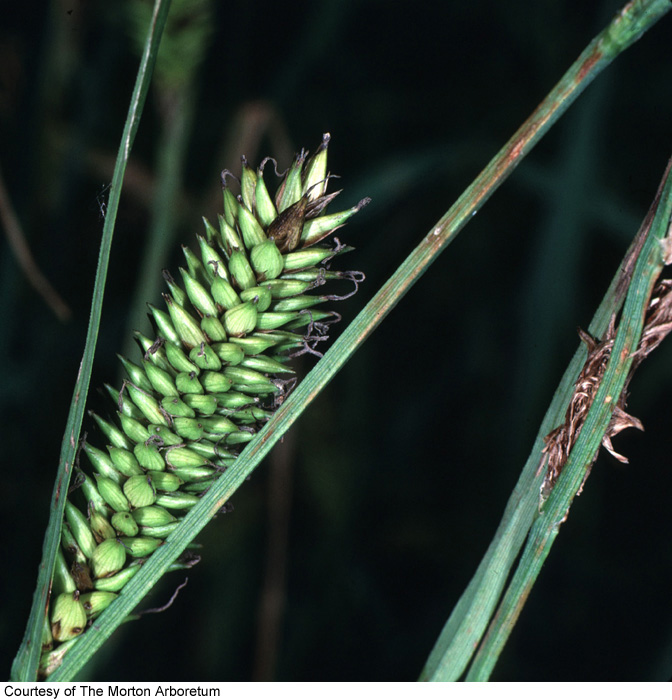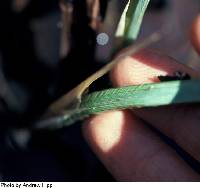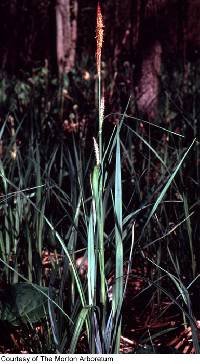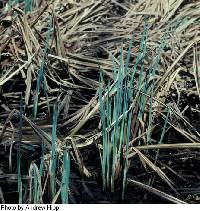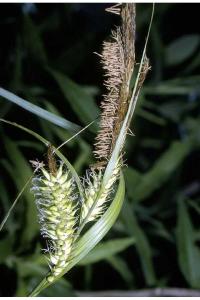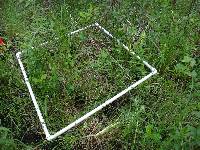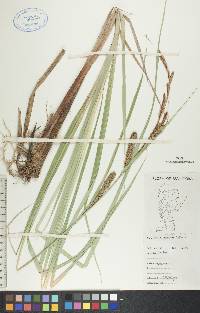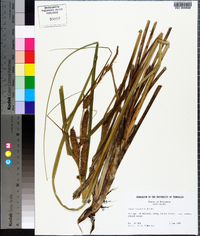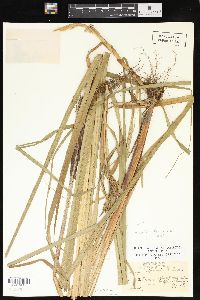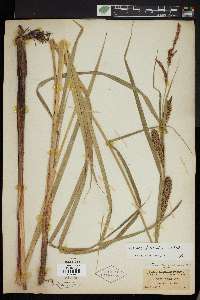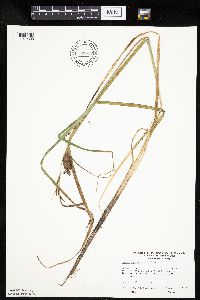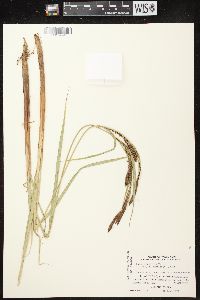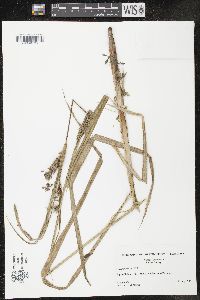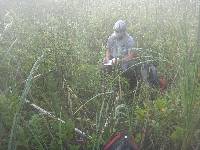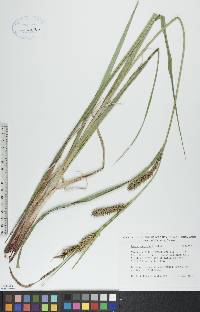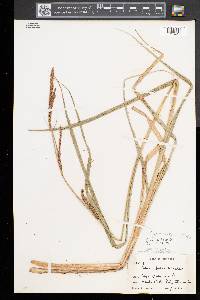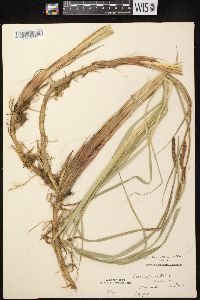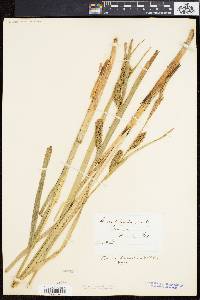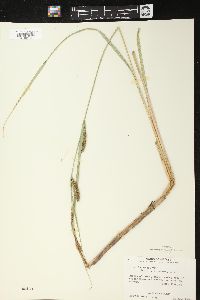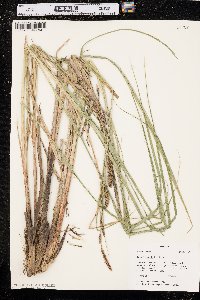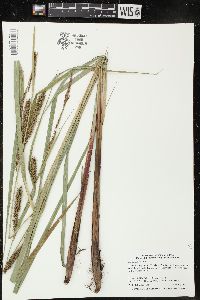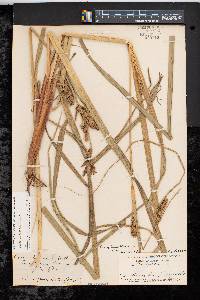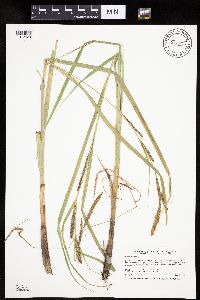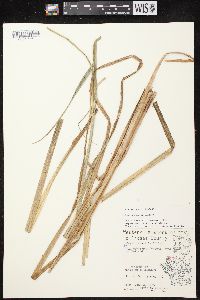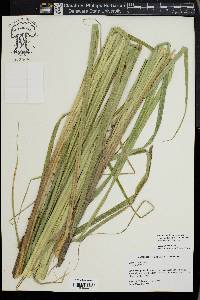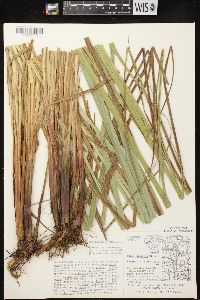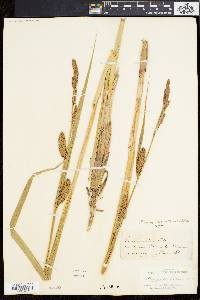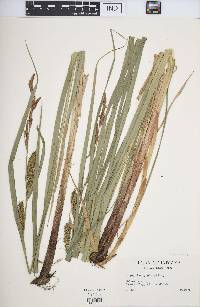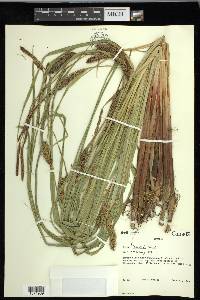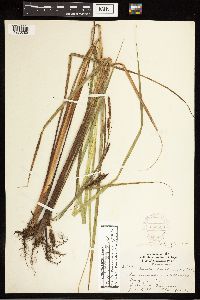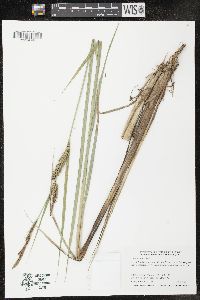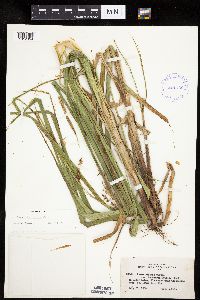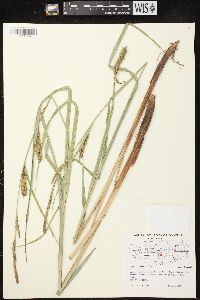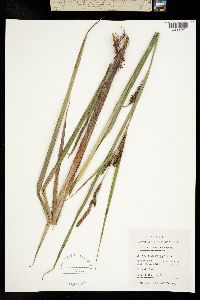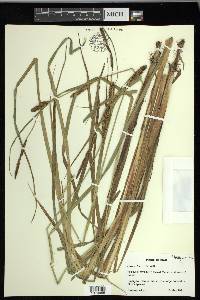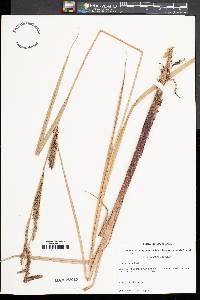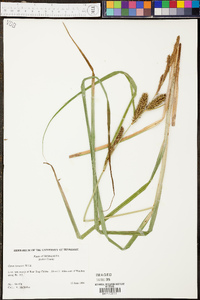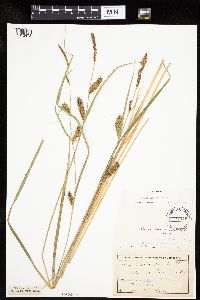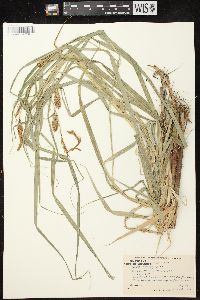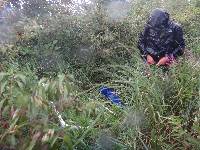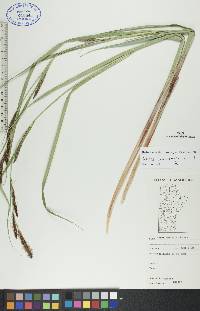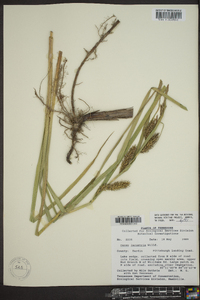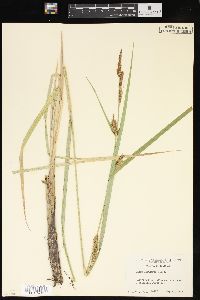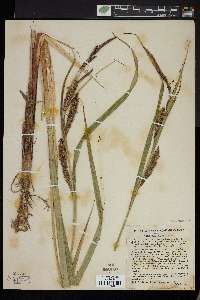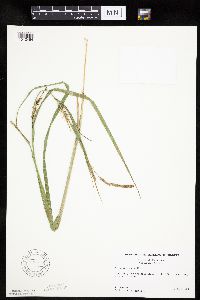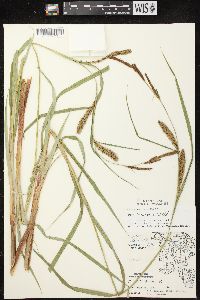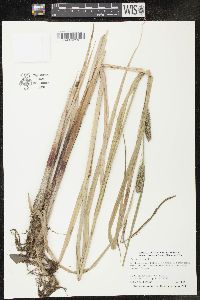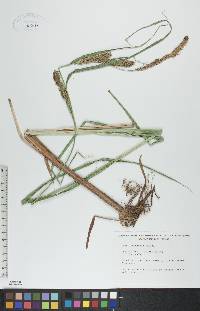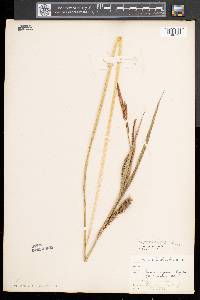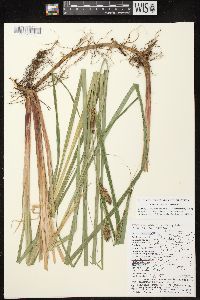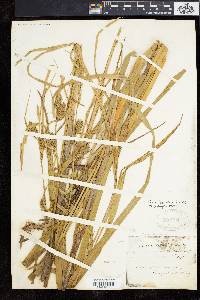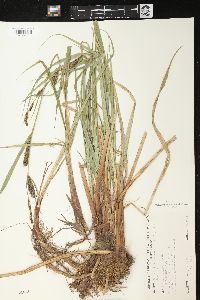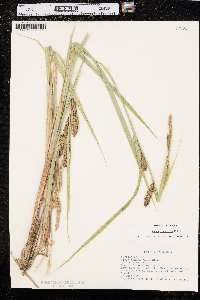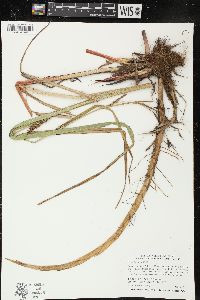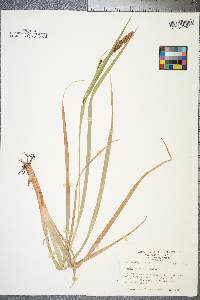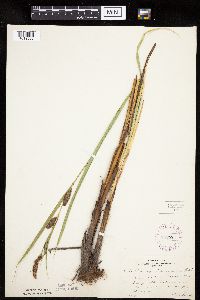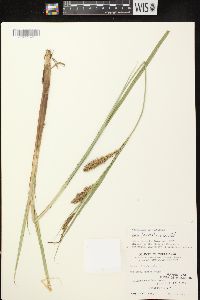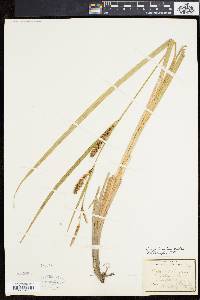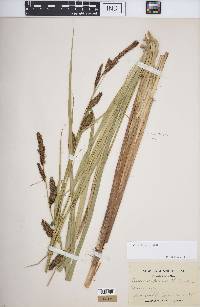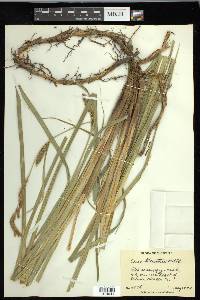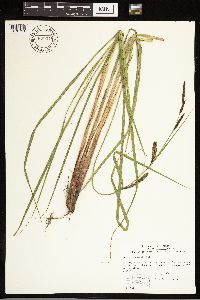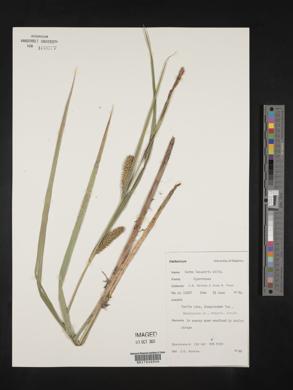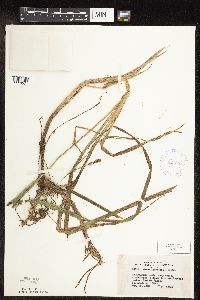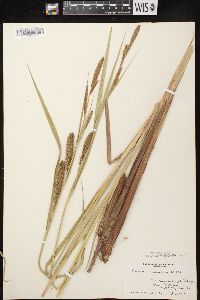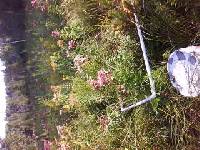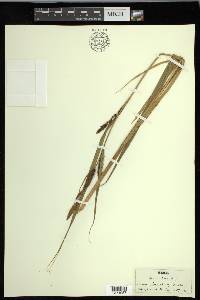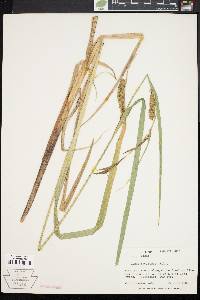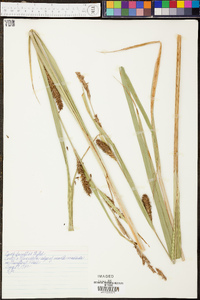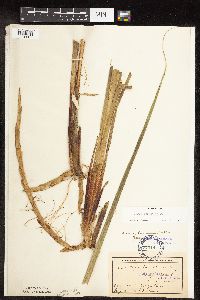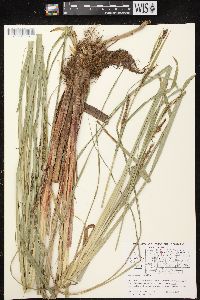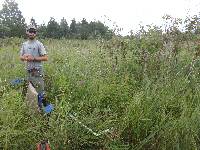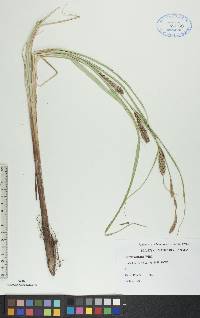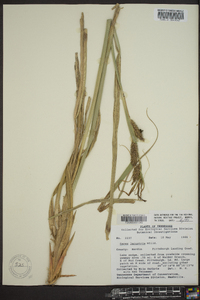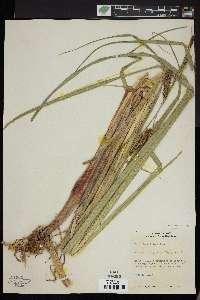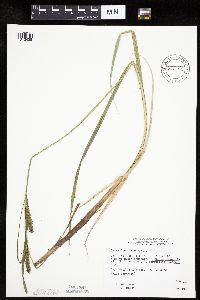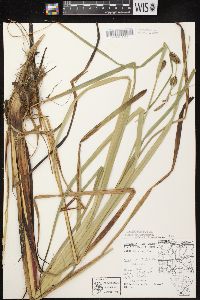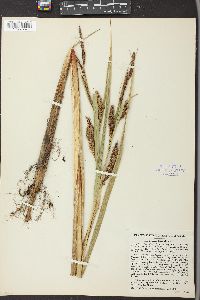Carex lacustris
|
|
|
|
Family: Cyperaceae
Lakebank Sedge, more...hairy sedge
|
Plants colonial; rhizomes long-creeping. Culms lateral, coarse, trigonous, 50-135 cm, smooth or somewhat scabrous-angled distally. Leaves: basal sheaths reddish purple, strongly fibrillose, bladeless; longest ligules 13-40(-56) mm, much longer than wide; blades glaucous to pale green, M-shaped, (5.5-)8.5-21 mm wide, glabrous. Inflorescences 17-60 cm; proximal 2-4 spikes pistillate, ascending to arching; distal spikes erect; terminal 3-5(-7) spikes staminate. Pistillate scales lanceolate to ovate, apex obtuse to acuminate, glabrous, awn 0.3-3.5 mm, ± scabrous. Perigynia ascending, usually strongly 14-28-veined, narrowly ovoid to narrowly ellipsoid, (4.5-)5.2-7.8 × 1.6-2.5 mm, glabrous; beak obscure, 0.5-1.6 mm, bidentulate, teeth straight, 0.2-0.7(-0.9) mm. 2n = 74. Fruiting May-Jul. Open swamps, wet, open thickets, marsh edges, sedge meadows, fens, shores of streams, ponds and lakes; 0-1000 m; Alta., Man., N.B., Nfld. and Labr. (Nfld.), N.S., Ont., Que., Sask.; Conn., Del., D.C., Idaho, Ill., Ind., Iowa, Maine, Md., Mass., Mich., Minn., Mo., Mont., Nebr., N.H., N.J., N.Y., N.Dak., Ohio, Pa., R.I., S.Dak., Vt., Va., W.Va., Wis. Carex lacustris is abundant and often a dominant of calcareous, north-temperate wetlands. Sometimes extensive stands are seen without fertile culms. Rare hybrids between Carex lacustris and C. hyalinolepis, C. pellita, C. trichocarpa (P. M. Catling et al. 1989), and C. utriculata are known; the hybrids are sterile and intermediate in morphology and can form extensive clones.
Stems stout, 5-15 dm, arising singly or few together from long, stout, scaly rhizomes, aphyllopodic, lateral, not surrounded by old lf-bases, the lower sheaths strongly reddened, soon breaking and becoming very fibrillose; main lvs 8-15 mm wide, glabrous except for the scabrous margins, usually conspicuously cross-septate; ligule much longer than wide; staminate spikes 2-4, distal, the lateral ones sessile; pistillate spikes 2-4, usually separate, cylindric, 3-10 נ1-1.5 cm, erect, densely fld, sessile or short-peduncled; bracts lf-like and scarcely or not at all sheathing, some or all surpassing the infl; body of the pistillate scales much shorter than the perigynia, ovate to oblong, the sides hyaline or pale brown, the green midrib often prolonged into an awn to 3 mm; perigynia rather slenderly ovoid or ellipsoid- ovoid, glabrous, with ±evidently raised nerves, 4.7-7.3 (avg 6) mm, gradually narrowed into the beak, this with divergent triangular teeth 0.4-1 mm; achene trigonous, continuous with the persistent, slender, abruptly bent or flexuous style; 2n=74. Swamps and marshes; Que. to Va., w. to Sask. and Nebr. Gleason, Henry A. & Cronquist, Arthur J. 1991. Manual of vascular plants of northeastern United States and adjacent Canada. lxxv + 910 pp. ©The New York Botanical Garden. All rights reserved. Used by permission. From Flora of Indiana (1940) by Charles C. Deam Common in calcareous soils in marshes and ditches and on borders of swamps, lakes, and streams. It often forms extensive stands in marshes. This, and to a lesser extent the following species, seem to be somewhat periodic in fruiting, at least in the Great Lakes States. Often throughout one or more seasons in a large colony, only a few plants, if any, will be found with fertile culms. ...... Indiana Coefficient of Conservatism: C = 7 Wetland Indicator Status: OBL |

